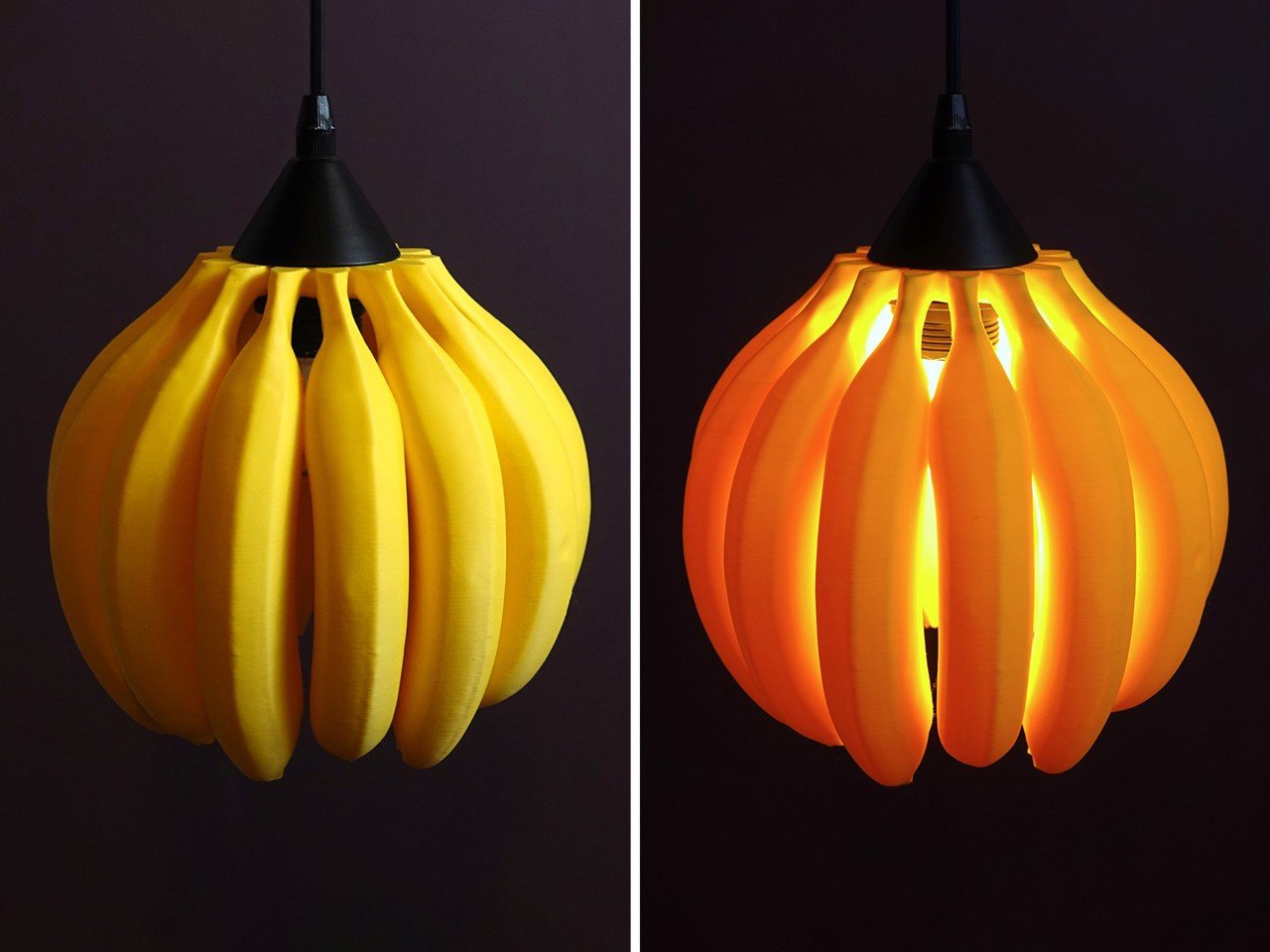In the realm of product design, nature’s bounty – particularly fruits, offers boundless inspiration. These natural wonders provide a perfect blend of vibrant colors, unique textures, and organic shapes that designers eagerly incorporate into their work. Fruits not only deliver aesthetic appeal but also evoke positive associations with health and vitality, creating products that resonate on both visual and emotional levels.
Drawing from the biophilic elements of fruits allows designers to create pieces that balance beauty with functionality. By emphasizing connections to nature, fruit-inspired designs celebrate organic simplicity while delivering practical innovation. This approach demonstrates a commitment to natural aesthetics and sustainable thinking, transforming everyday items into products that feel both familiar and refreshingly original.
1. Go for Fruit-inspired Shapes
As nature doesn’t adhere to strict shapes, fruits are celebrated for their organic, rounded, and curved forms. These natural shapes inspire products that embrace functional curves, enhancing both comfort and aesthetics. When paired with tactile surfaces, these shapes create a more enjoyable and engaging user experience, adding a playful element to the design. Fruits inherently possess beautiful, harmonious shapes that are pleasing to the eye, with their gentle curves and contours making them more enjoyable to hold. From home décor to tech products, incorporating these playful, curvaceous forms brings a touch of whimsy, vibrancy, and fun, while adding depth to the overall experience.
Gazzaladra’s Banana Lamp takes the whimsical idea of glowing bananas and turns it into a clever, creative design. Crafted using detailed 3D scans of real bananas, this lamp transforms an everyday fruit into a striking piece of functional art. The lamp’s design captures the authentic curves and textures of a banana bunch, making it both lifelike and modern. It’s not just a light source but also a conversation starter that adds personality to any space.
The Banana Lamp blends aesthetics with practicality and its charm lies in the perfect balance of form and function. Designed for LED bulbs only, the lamp is made with materials that can withstand lower heat, ensuring safety and durability. Gazzaladra’s Banana Lamp is a fun reminder to embrace the quirky and unexpected in design. It turns an ordinary object into something extraordinary, adding a playful touch to any room while sparking creativity and joy.
2. Select Bright Colors
Fruit-inspired product design captures attention due to its visually striking appearance and colors that make it stand out. These colors infuse energy and vitality, while the appropriate use of color psychology is key in influencing mood. For instance, the bright red color of strawberries is associated with excitement and energy, the vibrant yellow of bananas reminds one of warmth and happiness, the rich hues of oranges are linked to friendliness and excitement, and green kiwis are associated with health and freshness. Also, the fresh citrus tones evoke a sense of rejuvenation and add a refreshing touch to any product design.
The term “quadruped robot” is typically associated with dog-like designs inspired by Boston Dynamics’ Spot, a new DIY robot that challenges this convention with a unique and unexpected form. This unique robot features four legs, but instead of resembling canines or other animals, it disguises itself as a fruit that splits into four parts and moves like a crab. It’s a playful, real-world Transformer in a small, quirky package. Named Sherobo, this robot is built using off-the-shelf components for the mainboard and motors, with custom 3D-printed parts for the frame, body, and legs.
Each of the four legs of the robot has three degrees of freedom (3DoF) that offer impressive mobility and flexibility. Despite this, its leg placement makes it walk more like a crab than a typical quadruped. The fruit-inspired design, such as a watermelon or any spherical object, is an unconventional choice but adds to the robot’s charm. Sherobo is a fascinating exploration of robot design that expands the definition of a quadruped robot.
3. Go for Textured Forms
Fruits feature a variety of surfaces, each offering a unique tactile experience. From the rough texture of a pineapple to the smooth, glossy feel of an apple or the velvety finish of a peach, these natural qualities can significantly enhance a product’s appeal. By incorporating such textures, designers introduce an organic quality to the product, giving it depth and visual interest. These diverse textures not only stand out but also create a multisensory experience, elevating the design. The addition of textured surfaces can produce dynamic shadows and a captivating appearance, making the product enjoyable to hold and adding richness to its overall aesthetic.
The Pineapple Villa at Nickelodeon Resort in Punta Cana offers a luxurious and unique vacation experience, inspired by the iconic pineapple home of Spongebob Squarepants. This distinctive villa captures the essence of the beloved cartoon character’s underwater abode, featuring playful design elements such as blue bamboo wallpaper, a floaty chair, a bulls-eye window, and a diving-helmet-shaped TV, creating an immersive environment that transports guests into the world of Bikini Bottom.
This two-bedroom, three-bath villa is designed with comfort and style in mind. It includes a private master suite with a king-size bed, expansive living and dining areas, both indoor and outdoor, and a modern marble bathroom. Guests can unwind in the Aguas del Amor outdoor shower or relax in the freestanding tub, surrounded by the villa’s private gardens. The Pineapple Villa also features an infinity pool and sunbathing beds. With its one-of-a-kind design and luxurious accommodations, the Pineapple Villa offers an unforgettable stay.
4. Focus on Sustainable Design
Sustainability is not a luxury but a necessity, especially as we witness the effects of climate change. It is crucial to reduce our reliance on non-biodegradable plastic products. There is growing experimentation with fruit waste alternatives to address this issue. Many products are now made from fruit waste that offers sustainable and eco-friendly design solutions. For example, fruit leather is being used as an alternative to real leather, helping to reduce environmental impact. Some brands are also creating fruit-based plastics from biodegradable materials. Additionally, eco-friendly food packaging is being developed to promote a circular economy by minimizing waste and supporting sustainability, ensuring that products do not end up in landfills.
Traditional leather alternatives, while animal-friendly, still rely on harmful chemicals. Piñatex is an innovative, sustainable alternative made from discarded pineapple leaves which is a byproduct of fruit harvesting that would otherwise be burned, contributing to carbon emissions. Piñatex transforms these leaves into a leather-like material, offering a sustainable solution that mimics real leather in look and feel. Piñatex is versatile, durable, and water-resistant, making it suitable for various products, from accessories to upholstery.
It’s easier to produce in different colors using GOTS-certified pigments and is coated with a water-based resin for added durability. The material is non-woven, replicating the texture of leather without harmful chemicals. The process is eco-friendly, using fewer resources and creating a circular economy. The leftover leaves can be used as fertilizer or biofuel, benefiting the environment and pineapple farmers. Piñatex is a sustainable leather alternative that supports local farmers, offering them a new revenue stream.
5. Consider Quirky Designs
Fruit-inspired quirky designs unlock creative possibilities and introduce a playful element that enhances the product’s overall appeal when integrated into product design. By incorporating these fun, imaginative designs, products become more engaging, inviting users to interact with them. These designs are functional and celebrate nature’s beauty, infusing the freshness and vibrancy of fruits into our everyday lives.
The Peel-Pal transforms the humble arch of discarded fruit peels into whimsical utensil stands for your dining table. Available in five vibrant “flavors” – orange, watermelon, kiwi, lemon, and grapefruit – each stand mirrors its fruit inspiration in both shape and color. These playful accessories add an unexpected pop of personality to everyday meals, turning the mundane act of resting your chopsticks or cutlery into a subtle design statement that sparks conversation.
What makes these fruit-inspired stands truly charming is their commitment to the concept. The button-like base provides stability while enhancing the quirky aesthetic, and even the packaging continues the fruit theme with color-coordinated boxes. Whether paired with minimalist tableware for striking contrast or colorful dishes for a bold, eclectic look, the Peel-Pal proves that functional objects can be both practical and delightfully unconventional, bringing a slice of whimsy to your dining experience.
The unconventional elements inspired by fruit add joy, infuse color, and brighten spaces, lifting the mood and transforming ordinary items into functional art. From lamps to chairs and décor, each product becomes an interesting focal point that offers a playful way to bring nature into your home.
The post 5 Best Inspiration That Unleash the Potential of Fruit-Inspired Product Design first appeared on Yanko Design.

